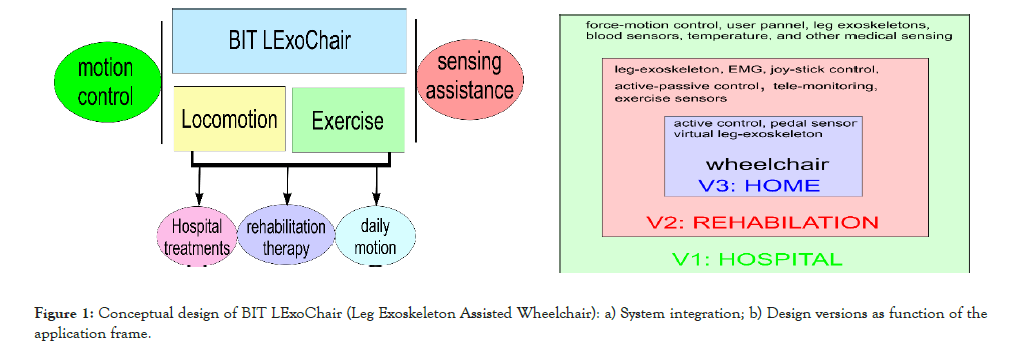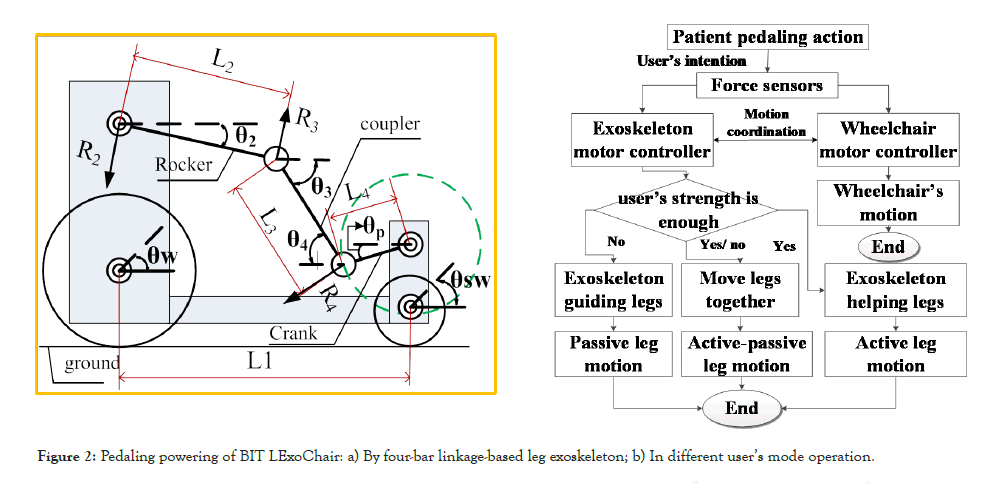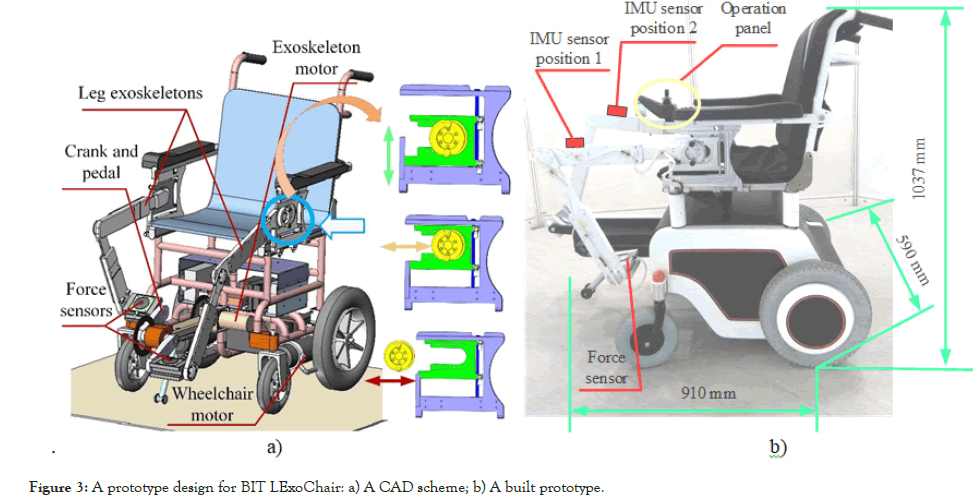International Journal of Physical Medicine & Rehabilitation
Open Access
ISSN: 2329-9096
ISSN: 2329-9096
Short Communication - (2021)Volume 9, Issue 1
The BIT LExoChair wheelchair for motion assistance was designed as a solution with a modular design for user’s locomotion mobility with the aim of assisting autonomy, exercising, and rehabilitation, with activities in design, experimental validation, and implementation that are summarized in the main listed references [1-11], as referring to the patent files [1,2]. This mini-review is based on illustration form the references papers as summary of the work and results in developing the BIT LExoChair wheelchair towards practical market availability in a near-future.
The design is based on a traditional wheelchair design that is powered and sensored for controlled operation with different equipment as function of the environment and aim of usage with satisfaction and comfort to a user while recovering or exercising for her/his autonomous mobility with a better social inclusion among people evolving in its usage from first hospital activity through rehabilitation therapies up to home exercising, even for autonomous locomotion, (Figure 1).

Figure 1: Conceptual design of BIT LExoChair (Leg Exoskeleton Assisted Wheelchair): a) System integration; b) Design versions as function of the application frame.
The design and the peculiar operation of the BIT LExoChair wheelchair is based on the combination of four-bar linkage leg exoskeletons and powered wheelchair with proper sensors to run different modes (active, passive, active-passive) as function of the will and strength of a user, Figure 2. The leg exoskeleton has the aim to keep the leg motion in sagittal plane and to use or transfer power from the leg to the wheelchair actuator and vice versa.

Figure 2: Pedaling powering of BIT LExoChair: a) By four-bar linkage-based leg exoskeleton; b) In different user’s mode operation.
The prototype design is shown with details in the CAD design in (Figure 3). a) as per the connections of the leg exoskeleton to the wheelchair frame with variable conditions as function of the leg size and strength of a user. The built prototype of the third version is shown in Figure 3. b) With a market-oriented solution containing the most completed equipment with shaped design for user’s acceptance and comfort, and the IMU sensors also for tele- monitoring of the user’s health pedaling conditions.

Figure 3: A prototype design for BIT LExoChair: a) A CAD scheme; b) A built prototype.
Experimental validation has been worked out with lab testing, also for performance characterization using several sensors, with results as reported in the examples in Figure 4. The pedaling force as in Figure 4 a) that is acquired by a force sensor on pedals surface beneath a foot, can give a clear indication of user action in term of rehabilitation therapy or exercising powering the wheelchair. Successively, a market-oriented prototype like the one in Figure 3 b) has been successfully experienced in piloting applications in a hospital and in-home usage. Currently an improved the design is under further development for better features in a modular design as in the three versions for the three different frame usage that are outlined in Figure 1b In addition, a new prototype is under construction as per a design with virtual leg exoskeletons acting on the pedaling motor and hip joint without a physical mechanical design that can be experienced as uncomfortable for sitting in in and out from the wheelchair.

Figure 4: Examples of testing results for operation validation of BIT LExoChair prototype in terms of acquired user’s pedaling force from: (a) A healthy volunteer (in family); (b) A volunteer with weak lower limb (in hospital).
Citation: Huang G, Ceccarelli M, Zhnag W, Huang Q (2020) Design and Performance of Bit Lexochair, a Robotic Leg-Exoskeleton Assistive Wheelchair. Int J Phys Med Rehabil 9:581.
Received: 18-Nov-2020 Accepted: 02-Dec-2020 Published: 09-Dec-2020 , DOI: 10.35248/2329-9096.21.9.581
Copyright: © 2020 Huang G, et al. This is an open-access article distributed under the terms of the Creative Commons Attribution License, which permits unrestricted use, distribution, and reproduction in any medium, provided the original author and source are credited.